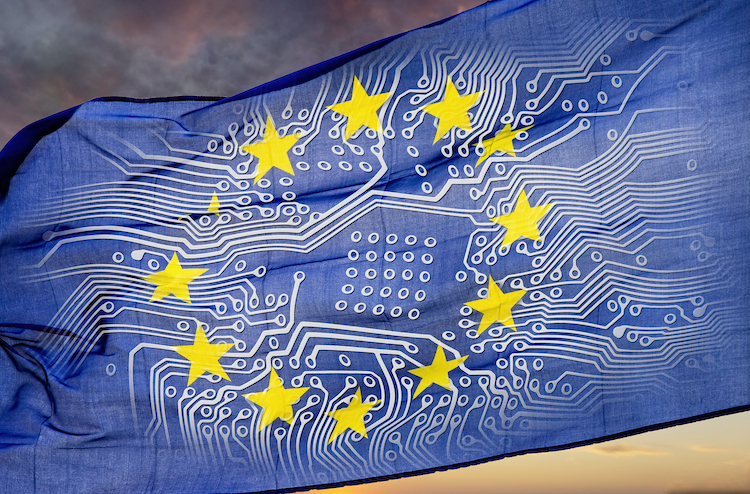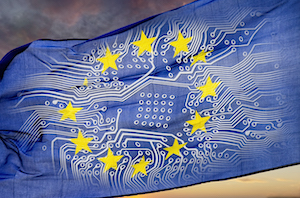To strengthen its position in the AI technology race, Europe needs a new approach.
The Artificial Intelligence (AI) and Machine Learning (ML) landscape is largely dominated by two powers that are investing enormous resources to assert their dominant positions: the US and China. The prevalent AI approaches they have institutionalized are based on resources that make it difficult for Europe to compete.
All state-of-the-art AI approaches rely on computational brute force, which is required to train AI models with gigantic amounts of data in order to improve the quality of results. This confronts European AI with two problems: nobody in Europe has comparable datasets to the US and China, and the high costs of training a state-of-the-art language model (currently >$100K) drastically limit academic research, on which AI largely relies. While there is no lack of funding for AI activities in the US and China, either because of a hyperactive VC scene or a governmental funding strategy, European startups and academic researchers find it difficult to access the funds necessary to play in the same AI league. And more and more AI scientists leave the European AI scene, lured by the astronomical salaries offered by tech giants like Amazon and Google, confronting Europe academia with a penalizing brain drain.

Since Europe cannot compete with the terms laid down by the US and China, it must create its own AI ecosystem that will leverage its strengths, turning its differences into assets. Europe needs a flagship project that capitalizes on its historical, political and social characteristics. And what distinguishes Europe from the American and Asian cultures more than its vision of a green future, its striving for social fairness and its diverse language landscape?
- AI and the European Green Deal
Currently, the global use of energy for powering computing devices, ranging from mobile devices to telecommunication & cloud infrastructures amounts to about 4% of the total global energy consumption. This rate roughly equals the energy consumption of the global aviation fleet and is projected to surpass 8% by 2030, making the IT industry the only sector systematically increasing energy consumption where the rest of the world follows strict energy cutting plans. This increase of energy consumption within the IT industry is mainly driven by the ever-increasing number and size of AI models that are being generated with continuously growing data sets and the computational brute force approach of artificial neural network techniques.
The European AI strategy should therefore promote research and development in the sector of “High Efficiency AI” – approaches that enable the generation of high-quality AI models that require substantially less energy, by improving the current state-of-the-art in terms of efficiency (less training data, less energy consumption, shorter execution time).
- AI and the European social fairness
Currently, AI technology is mainly applied by tech giants in the US and China to understand the habits of citizens, often uncovering private behavior. In order to provide the large amounts of data needed to create sophisticated models of consumer profiles, an increasingly tight mesh of data collection measures has been deployed over the internet to capture every aspect of each individual human life. This is all the more problematic as this information serves as basis for decisions that affect people’s private life (for example, whether they qualify for a loan or not) and as the mechanisms in place lack transparency.
Most recently, topics like personal data privacy and governmental regulation of specifically sensitive areas (e.g. in social networks) are being discussed more broadly. In order to introduce adequate regulatory measures, it is essential to know which data is being used to create consumer profiles and how the applied algorithms behave in a social, economic and political context, as well as how they will impact societies at large.
The European AI strategy should therefore promote research and development of “High Transparency AI” to improve accountability of algorithms, automated regulatory compliance measures as well as traceability of personal data, to protect citizens and allow a socially balanced, sustainable economic market structure.
- AI and the European multilingualism
The European economic area is genuinely multilingual. Natural language understanding is a core AI domain and centrally relevant in many business process automation tasks and therefore a key factor for future productivity gains. Both main competitors, the US & China, are in principle monolingual.
The European AI strategy should therefore promote research and development of “Multilingual AI” and thrive to develop a unique asset that would help European efforts in developing cross-lingual AI tools. For example, a Wikipedia Canon, composed of cross-translated Wikipedia content in all EU languages, could become the richest parallel corpus of today and could serve as reference data set.
The European Commission has already recognized the necessity to strengthen, grow and support the European AI & ML market. While it is still pondering in which directions its efforts should go, it seems very likely that natural language understanding will play a central role in its future AI strategy. The creation of a European Language Technologies flagship project would favorably impact the European AI ecosystem and eventually, the global market.
